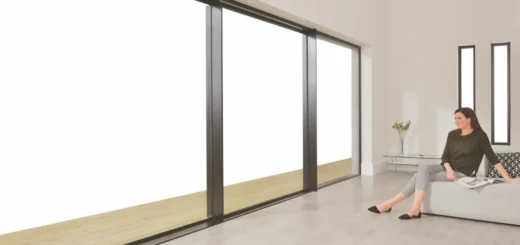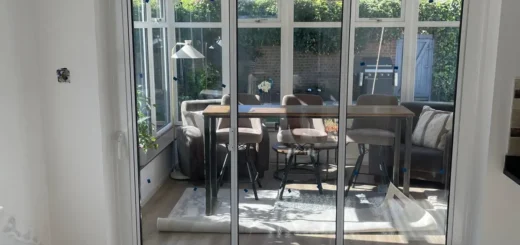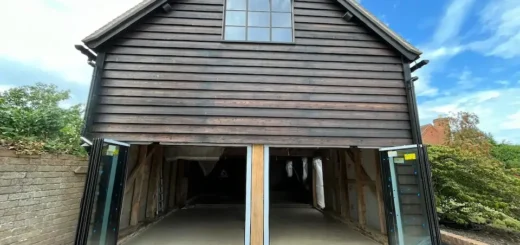Heritage Style Doors: Types, Materials & Design Guide
Table of Contents
What Are Heritage Style Doors?
Heritage style doors blend architectural authenticity with modern engineering, capturing the distinctive features of Britain’s rich architectural past. The artistry lies in the careful balance of traditional craftsmanship and contemporary performance standards.
Glass Panel Patterns Through the Ages
The arrangement of glass panels in heritage style doors often tells us exactly when a house was built. Georgian properties typically showcase perfect symmetry, with glass panels arranged in a neat six-over-six pattern. Moving into the Victorian era brought taller panels and more elaborate glazing bars, while Edwardian doors feature wider glass sections that let in more natural light.
Traditional Door Hardware
Brass or cast iron door furniture forms an essential part of any heritage style door’s character. Original Victorian rim locks work alongside modern multi-point locking systems, providing both period charm and security. The weight and feel of traditional metal handles creates an immediate sense of quality that modern plastic alternatives simply cannot match.
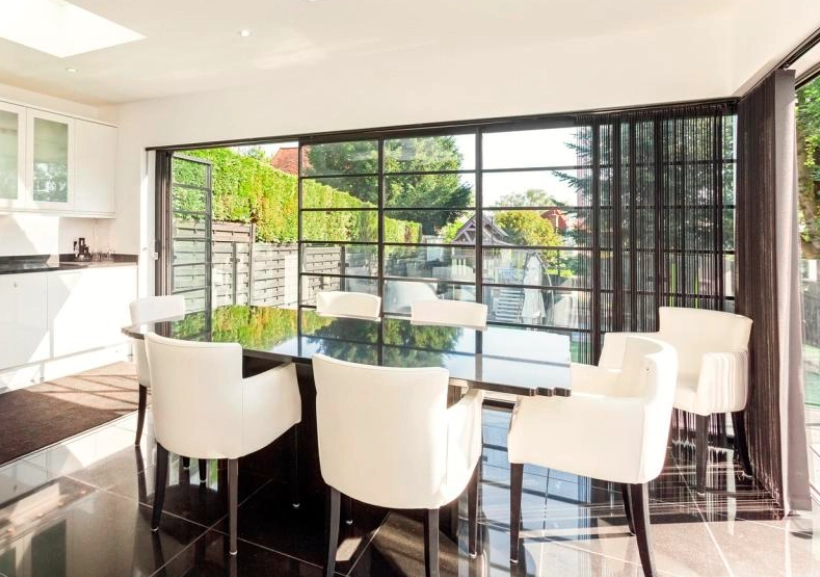
Modern Standards vs Period Features
Today’s heritage style doors must strike a delicate balance. While maintaining the grace of historical designs, they incorporate double-glazing and weatherproofing that their predecessors never had. Modern manufacturing allows for thinner glazing bars than original period doors, yet these still create authentic-looking shadow lines across the glass.
Building regulations now demand specific thermal values and security features from all external doors.
Rather than compromising historical accuracy, manufacturers have found clever ways to hide modern mechanics within traditional-looking frames. Multi-point locking systems sit discreetly behind period handles, while high-performance weather seals remain completely hidden from view.
Heritage Style Doors For Different Property Types
Period homes deserve doors that match their architectural heritage. Different eras brought distinct door styles, from the clean lines of Georgian designs to the ornate details of Victorian craftsmanship.
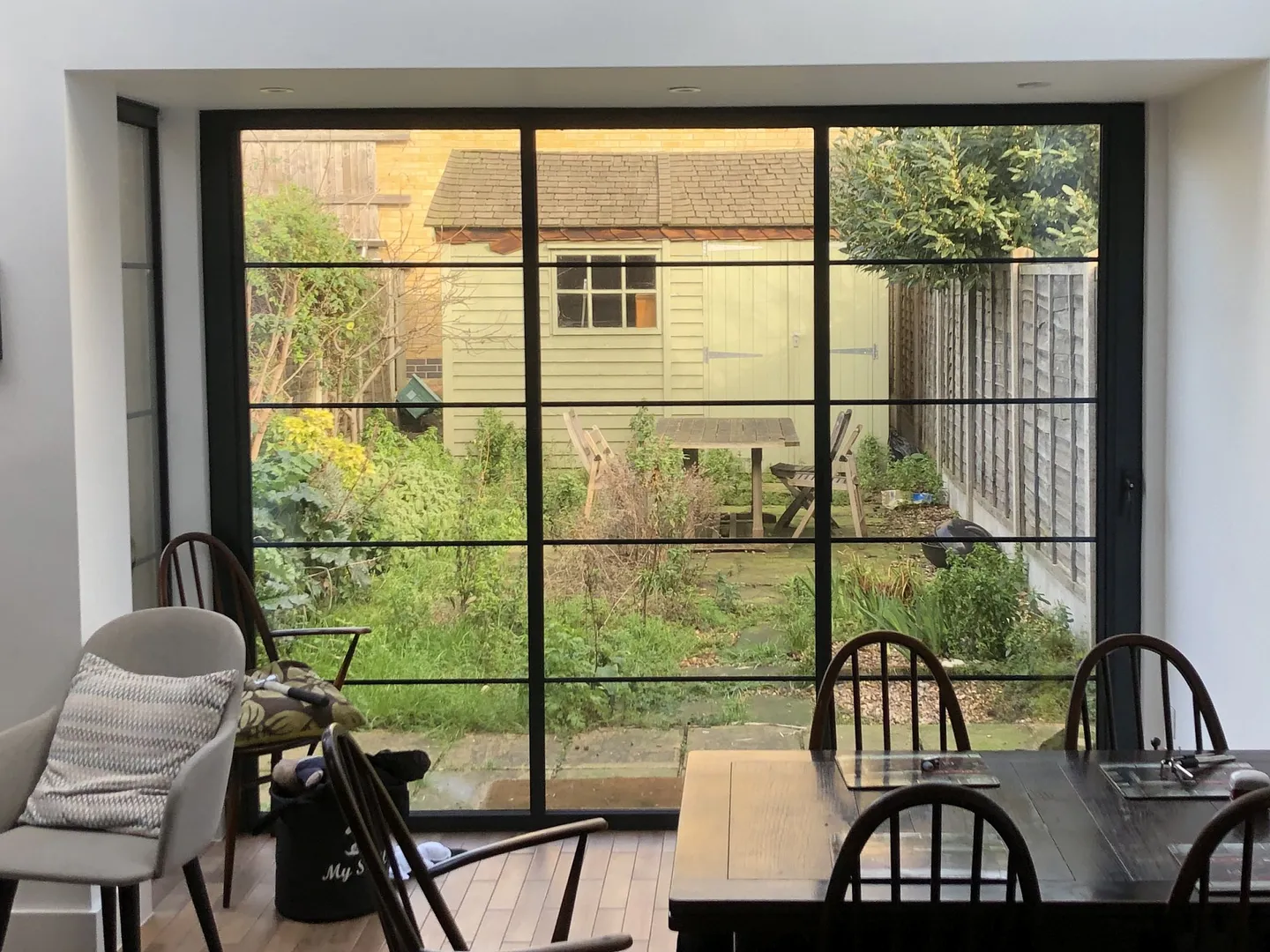
Georgian Properties (1714-1830)
Georgian architecture prizes mathematical proportion and classical order. Heritage style doors from this period mirror these principles with their strict grid-like design and perfect symmetry. The distinctive six-over-six glass arrangement creates strong vertical lines that draw the eye upward, while smaller panes maintain the authentic Georgian look modern homeowners seek.
Timber frames dominated Georgian doorways, though modern aluminium steel-look doors now offer a sturdy alternative.
Original Georgian exterior glass doors featured single glazing and slim glazing bars – a look that modern manufacturing techniques can now replicate while meeting current building standards. The typical Georgian door palette stuck to understated colours: deep greens, blues, and rich browns painted onto robust hardwood frames.
Victorian Era (1837-1901)
The 19th century brought sweeping changes to British architecture. Victorian heritage style doors showcase intricate mouldings and complex glass patterns that reflect the era’s love of ornate detail. Gothic influences appear in pointed arch details and elaborate tracery, particularly in higher-status homes of the period.
Cast iron hardware became increasingly popular during Victorian times, with ornate handle designs and decorative hinges adding character to heritage doors. Door frames grew taller, often incorporating elaborate fanlights above. Modern heritage style internal doors can recreate these grand proportions while fitting contemporary homes.
Edwardian Features (1901-1910)
Edwardian design marked a return to simpler styling. Grid-framed doors with fewer glazing bars allowed more light into homes, responding to the period’s focus on brightness and air. The art deco style doors that emerged toward the end of this era introduced bold geometric patterns, influencing door design well into the 1930s.
Edwardian homes often featured wider doorways than their Victorian predecessors. This generous scale suits today’s living patterns, making heritage doors from this period particularly popular for modern renovations. Glass panels grew larger, while decorative elements became more restrained than in the Victorian period.
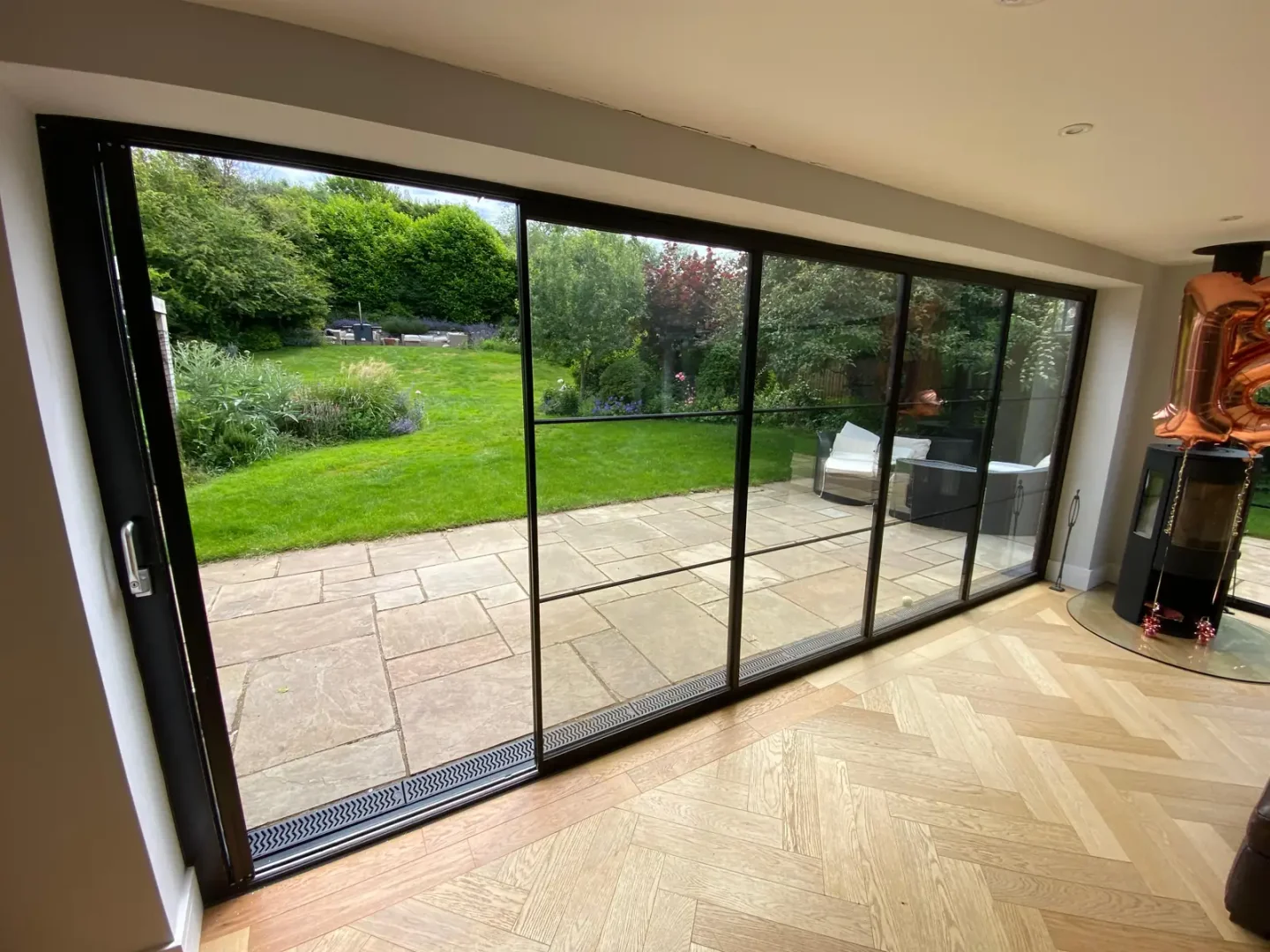
Early Modern Movement
The dawn of modernism brought fresh approaches to door design. Original steel windows and doors from this period now inspire many contemporary heritage style doors.
Clean lines and minimal ornamentation characterised these early modern designs, though they retained the quality materials and careful proportioning of earlier periods.
Metal-framed heritage doors gained popularity in the 1920s and ’30s.
These slender profiles created a distinctive look that many homeowners now seek to recreate. Modern manufacturing allows these traditional styles to incorporate double glazing and robust locking systems while maintaining their delicate appearance.
Architectural Evolution
Each era’s door styles reflected changing tastes and new construction techniques. The progression from Georgian symmetry through Victorian intricacy to Edwardian simplicity tells the story of British architectural development. Today’s heritage doors continue this tradition, combining historical accuracy with modern performance.
Types of Heritage Style Doors
Modern manufacturing allows heritage style doors to combine historical authenticity with the advantages of current door mechanisms. Each type offers unique benefits while respecting traditional architectural principles.
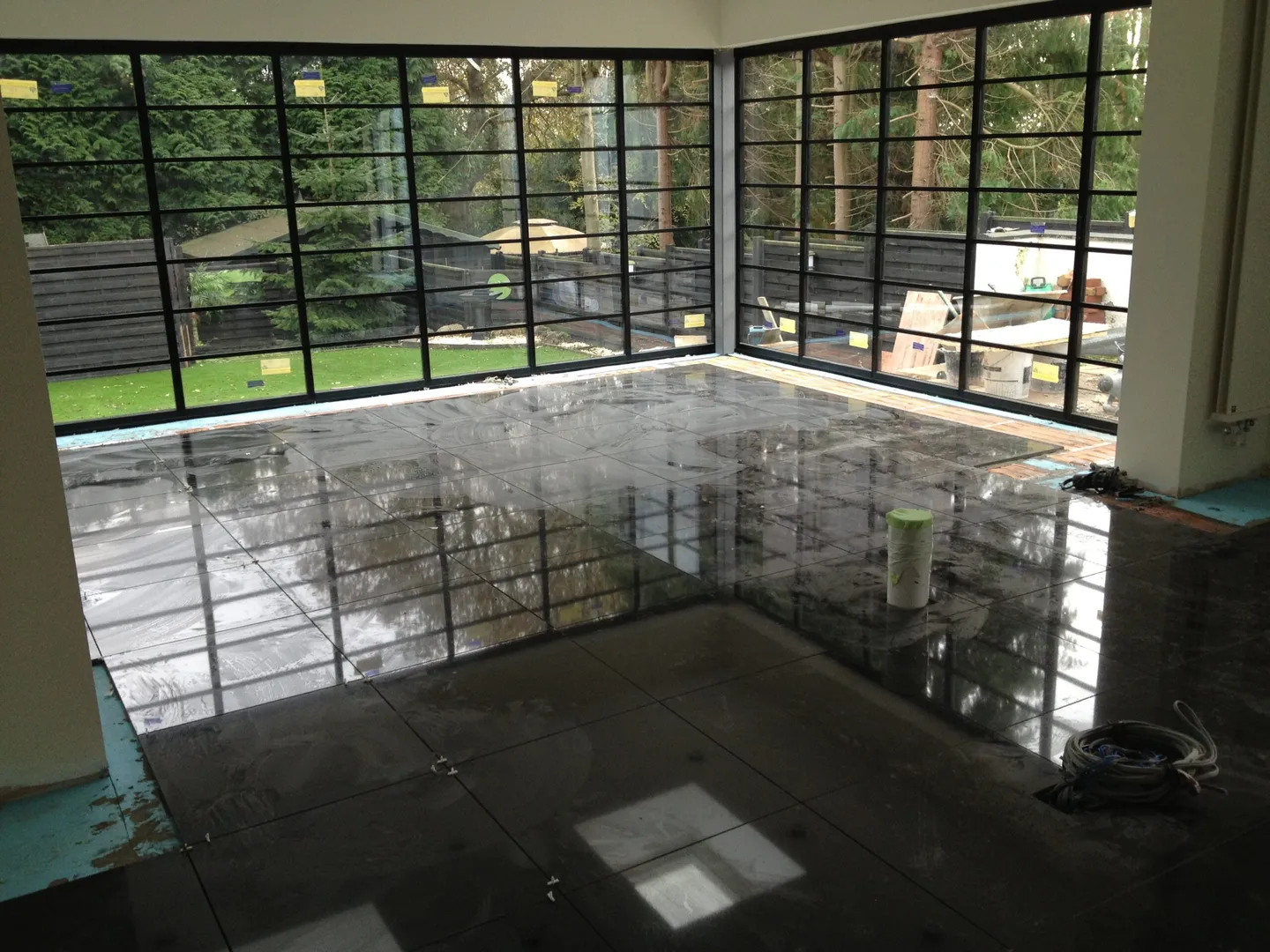
Heritage Bifold Doors
External folding doors (also known as bifold or concertina doors) have come a long way over the past few decades. Today’s heritage style bifold doors incorporate traditional details like deep bottom rails and authentic hardware while offering smooth operation. The slim sightlines of period-appropriate frames remain intact despite housing complex folding mechanisms.
Original Victorian industrial style doors inspired many current bifold designs. Heavy-duty hinges and runners echo the robust engineering of heritage factory doors, while modern materials improve reliability. Each panel of heritage bifold doors can be styled to match specific architectural periods, from Georgian glazing patterns to Art Deco geometry.
When closed, these doors maintain the appearance of traditional French doors or sliding panels. The frames’ depth and shadow lines match those found in period properties, creating visual consistency with existing windows and doors. Opening fully, they provide broader access to gardens than historical doors ever could, without compromising the building’s character.
Traditional Sliding Doors
Large sliding garden doors first appeared in grand Victorian conservatories. Modern interpretations of these heritage doors retain their impressive scale while adding precision-engineered running gear. Deep profile frames house multi-point locking systems and thick glass units, all while maintaining historically accurate proportions.
The weight of traditional sliding door panels demanded robust brass or steel runners. Contemporary systems hide modern bearing mechanisms behind period-style covers and guides. Proper Victorian sliding doors used counterweights, much like sash windows – today’s versions achieve the same smooth movement through advanced roller systems.
Slide and Turn Systems
Heritage style internal doors with slide and turn mechanisms offer new possibilities for period homes. Unlike basic sliding or bifold systems, these doors pivot at the end of their run, tucking neatly against walls.
Heritage French Doors
French doors have graced British homes since the Georgian period. Modern versions respect classical proportions while incorporating energy efficiency measures unseen in original designs. Equal sight lines and balanced mullions recreate authentic period details, even when housing modern multi-point locks.
Victorian French doors often featured elaborate glazing bars and decorative panels. Today’s manufacturing techniques allow these intricate designs to be reproduced without compromising security or thermal performance. Astragal bars sit within double-glazed units, creating the depth and shadow of traditional glazing bars while maintaining modern standards.
Making Heritage Style Doors Your Own
Heritage style doors allow for extensive personalisation while maintaining period authenticity. Every detail, from paint colours to hardware finishes, shapes how these doors complement your home’s character.
Colour Choices for Period Properties
Traditional paint colours carry deep historical meaning. Georgian heritage style doors often wore dark greens and blues, while Victorian homes introduced deeper purples and browns. Modern manufacturing processes recreate these historical shades with improved durability and UV resistance.
Black sliding doors gained popularity during the Art Deco period, creating bold statements in 1920s and 30s homes. This trend continues with modern heritage style doors, which pair traditional proportions with contemporary materials. Powder-coated finishes resist fading and chipping while maintaining the rich, deep appearance that heritage properties demand.
Paint analysis of original doors reveals that many ‘heritage’ colours actually changed over time. What appears brown today might have been dark green when first painted. Modern colour matching can recreate these original shades exactly, or provide sympathetic alternatives that suit today’s tastes while respecting historical precedent.
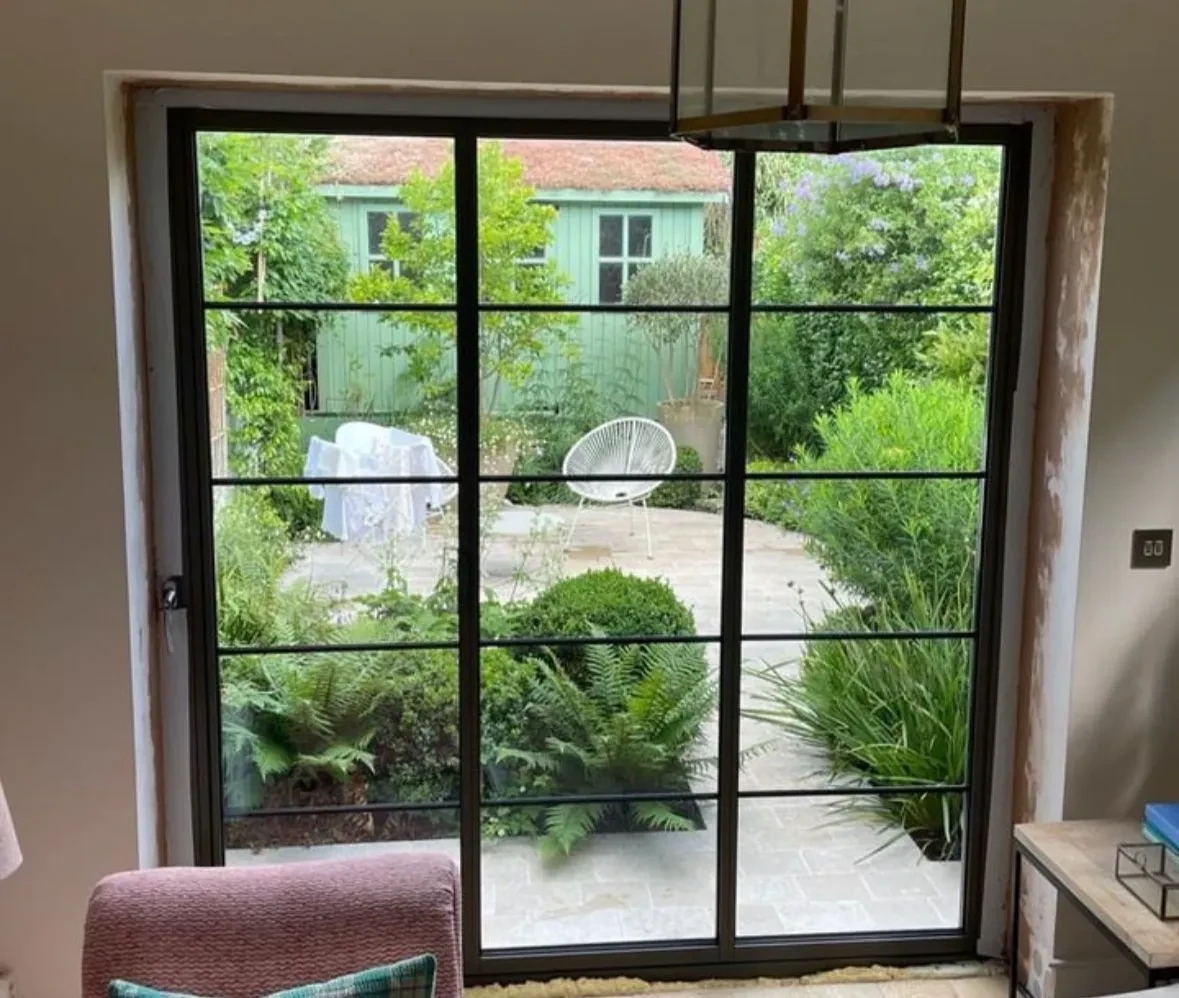
Glass Options and Glazing Bars
Slim frames characterised many original heritage style internal doors, particularly those from the Victorian era. Modern manufacturing allows for equally narrow profiles while housing double-glazed units. Astragal bars applied to both sides of the glass create authentic shadow lines without compromising thermal performance.
Original patio doors often featured intricate leaded designs. Contemporary glass techniques can replicate these patterns between modern glass panels, maintaining the traditional appearance while improving insulation.
Obscured glass patterns from different periods – from Georgian reeded glass to Victorian diamond-cut designs – can be reproduced using modern toughened glass.
Custom Hardware Selection
Door furniture tells its own historical story. Each period brought distinctive styles: Georgian brass handles showed classical restraint, while Victorian designs celebrated ornate detail. Modern copies capture these period-specific characteristics while incorporating current security features.
Different metals marked different eras. Early Georgian homes favoured polished brass, Victorian properties introduced cast iron, and Edwardian doors often featured copper or bronze. Today’s heritage doors can carry authentic-looking reproductions in any of these finishes, with modern rust protection built in.
Hand-forged hinges and locks commanded premium prices in period properties. Modern equivalents replicate their appearance while adding improved security features. Monkey-tail handles, shepherd’s crook designs, and ring pulls – all popular in different historical periods – now come with multi-point locking systems hidden within.
Materials
Today’s manufacturing allows for remarkable accuracy in reproducing period details. Computer-controlled cutting creates perfect glazing bars, while modern casting techniques capture every detail of traditional hardware designs. New materials improve longevity without changing the outward appearance of heritage style doors, preserving aesthetic appeal while adding modern benefits.
Special finishes recreate the patina of age without waiting decades. Antique brass effects, distressed bronze, and vintage copper finishes give new hardware immediate character. These treatments resist tarnishing better than their historical counterparts, maintaining their appearance with minimal maintenance.
Technical Aspects of Heritage Style Doors
Heritage style doors must satisfy modern building regulations while maintaining period aesthetics. This balance requires careful attention to technical details and installation methods.
Meeting Conservation Requirements
Listed buildings and conservation areas follow strict rules about door replacements. Many local authorities provide specific guidelines for different architectural periods, helping homeowners choose appropriate styles.
Planning departments often prefer bespoke bifold doors or sliding doors in heritage properties, as these can be tailored precisely to conservation requirements. Original architectural features must remain intact, which means door frames need careful adaptation to work with existing stonework, brickwork, and timber surrounds.
Thermal Performance
Modern glass technology improves the insulation of heritage style doors without changing their appearance. Low-emissivity coatings on glass panes block heat loss while remaining invisible to the eye. Traditional-looking glazing bars can house high-performance double glazing units that match current building standards.
Timber frames need careful sealing to prevent heat escape. Modern manufacturing methods allow for hidden rubber gaskets and brush seals that don’t compromise historical accuracy. The depth of period door frames actually helps with thermal efficiency, providing space for additional insulation materials.
Security Features
Multi-point locking systems hide within traditional-looking door frames. While heritage style doors might show a single keyhole or handle, modern mechanisms secure the door at several points. Original rim locks can still operate, working alongside hidden contemporary security features.
Cast iron and brass hardware now incorporates pick-resistant cylinders and anti-snap technology. Period-appropriate handles connect to modern locking mechanisms, providing security that matches current insurance requirements. Door hinges look traditional but contain modern security pins that prevent forced removal.
Installation in Period Properties
Older buildings rarely offer perfectly square openings for new doors. Heritage style doors need skilled fitting to work with uneven walls and floors while maintaining proper operation. Installers must often create custom frame extensions and carefully pack out gaps without damaging original materials.
Stone thresholds and timber sub-sills need special attention during installation. Modern drainage channels can be cut discreetly into original materials, protecting both the new doors and the building fabric. Proper installation ensures that period properties stay dry and draft-free without losing their historical character.
Advanced manufacturing allows for precise replication of period details. Computer-controlled cutting machines create exact copies of original mouldings and glazing bars, while modern materials provide improved durability. These technical advances mean heritage style doors can satisfy both conservation officers and building inspectors.
Heritage Style Doors FAQ
Can I install heritage bifold doors in a listed building?
The installation of heritage style doors in listed buildings always requires Listed Building Consent from your local authority. Conservation officers typically assess door designs case by case, looking at factors like material authenticity, glazing patterns, and hardware choices. Building owners must prove that new doors won’t harm the property’s historical character.
Are heritage style doors suitable for modern homes?
While heritage style doors originated in period properties, they work beautifully in contemporary settings. The clean lines of Georgian designs and the industrial aesthetic of Victorian-era doors particularly suit modern architecture.
Which materials are best for heritage style doors?
Hardwoods like oak, mahogany, and sapele remain the gold standard for heritage style doors, offering authenticity and longevity. These materials accept traditional paints and stains perfectly, develop character with age, and can be repaired rather than replaced. Modern aluminium alternatives now offer impressive period aesthetics with improved weather resistance and reduced maintenance needs.
Do heritage style doors meet modern security standards?
Today’s heritage style doors incorporate multi-point locking systems and other security features while maintaining period appearances. These doors often exceed current building regulations for security, with traditional-looking handles and locks concealing sophisticated modern mechanisms.
What colours are historically accurate for heritage style doors?
The ideal colour for heritage style doors depends entirely on your property’s era. Georgian homes typically featured deep blues, greens, and browns, while Victorian properties introduced richer colours like claret and purple. Period-appropriate paint companies offer extensive historical colour ranges based on archived evidence.
Are heritage style doors energy efficient?
Modern heritage style doors achieve impressive thermal performance through hidden technologies. Double-glazed units, thermal breaks, and sophisticated sealing systems work invisibly behind period-appropriate profiles and glazing bars. Your energy bills needn’t suffer for the sake of historical accuracy.
Can I add period features to existing doors?
Converting standard doors into heritage style doors requires careful attention to proportion and detail. While you can add period hardware and glazing bars to basic doors, achieving authentic results often costs more than installing purpose-made heritage doors.
Professional joiners and specialist manufacturers better understand the subtle details that make heritage doors look genuine.
Are metal heritage style doors authentic?
Metal heritage style doors have authentic roots in Victorian industrial architecture and Art Deco design. Early examples appeared in factories and grand public buildings before becoming popular in high-end homes of the 1920s and 30s.
What’s the difference between astragal and glazing bars?
Heritage style doors use both astragal and glazing bars to create period-appropriate glass patterns. Traditional glazing bars separate individual glass panes structurally, while astragal bars attach to the surface of double-glazed units to recreate the same appearance. Modern doors typically use astragal bars because they allow for better thermal performance without compromising historical aesthetics.
What door styles suit 1930s houses?
Art Deco influences make heritage style doors from the 1930s particularly distinctive. Tall, slim glazing panels, geometric patterns, and chrome or bronze hardware capture the era’s forward-looking spirit. Sunburst designs and stepped glass arrangements particularly suit houses from this period.
Can heritage bifold doors span wide openings?
Heritage style bifold doors can cover impressive spans while maintaining period authenticity. Modern engineering allows for panels up to three metres high, with no practical limit to overall width as long as each panel meets heritage proportions. The key lies in maintaining authentic sight lines and panel dimensions across the entire installation.
About SunSeeker Doors
With over 20 years of experience, SunSeeker Doors remains at the forefront of door design with our quality-tested patio doors and related products, including the bespoke UltraSlim aluminium slide and pivot door system, Frameless Glass Doors, and Slimline Sliding Glass Doors. All of our doors are suitable for both internal and external use.
To request a free quotation, please use our online form. You may also contact 01582 492730, or email info@sunseekerdoors.co.uk if you have any questions.


